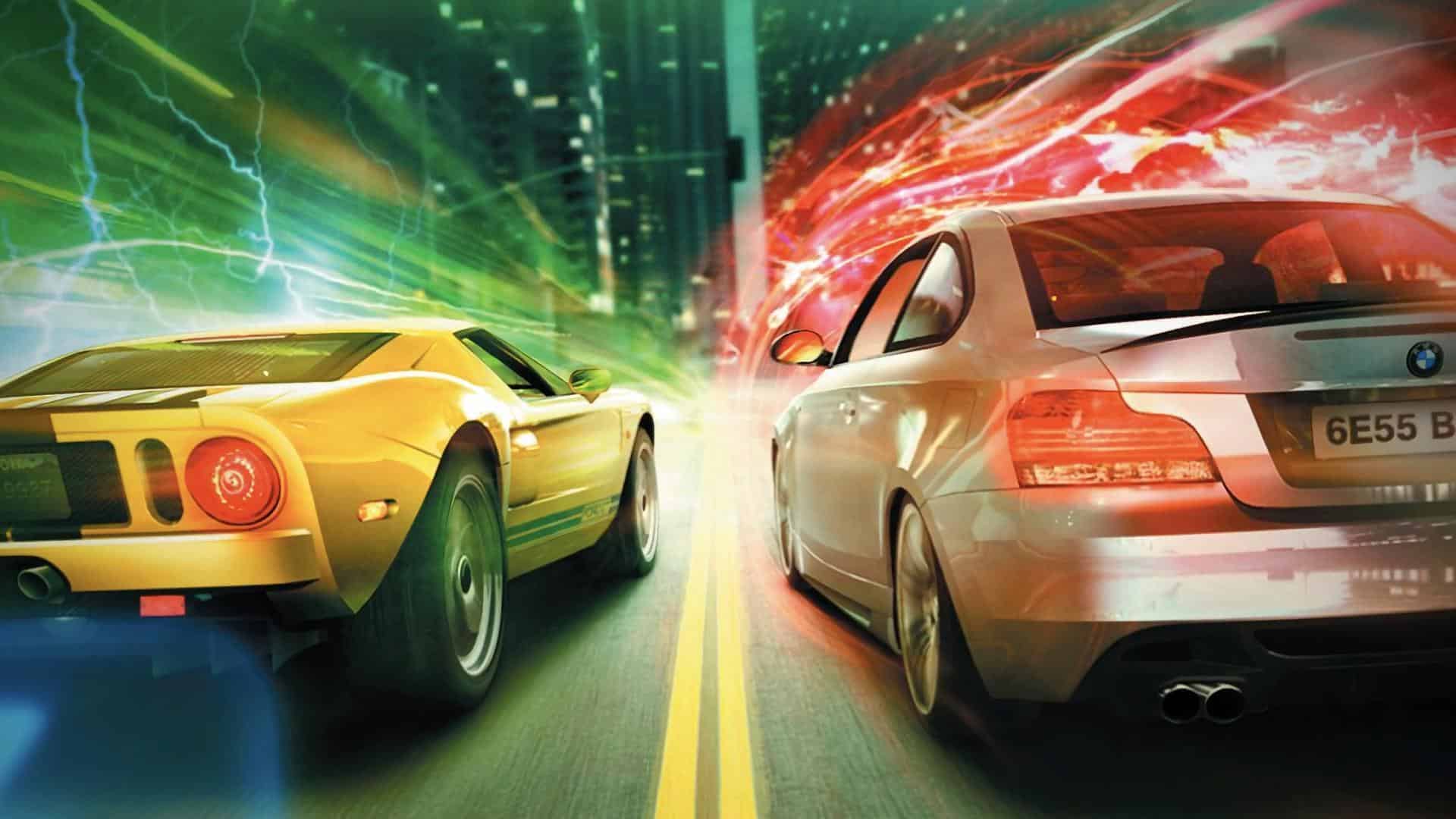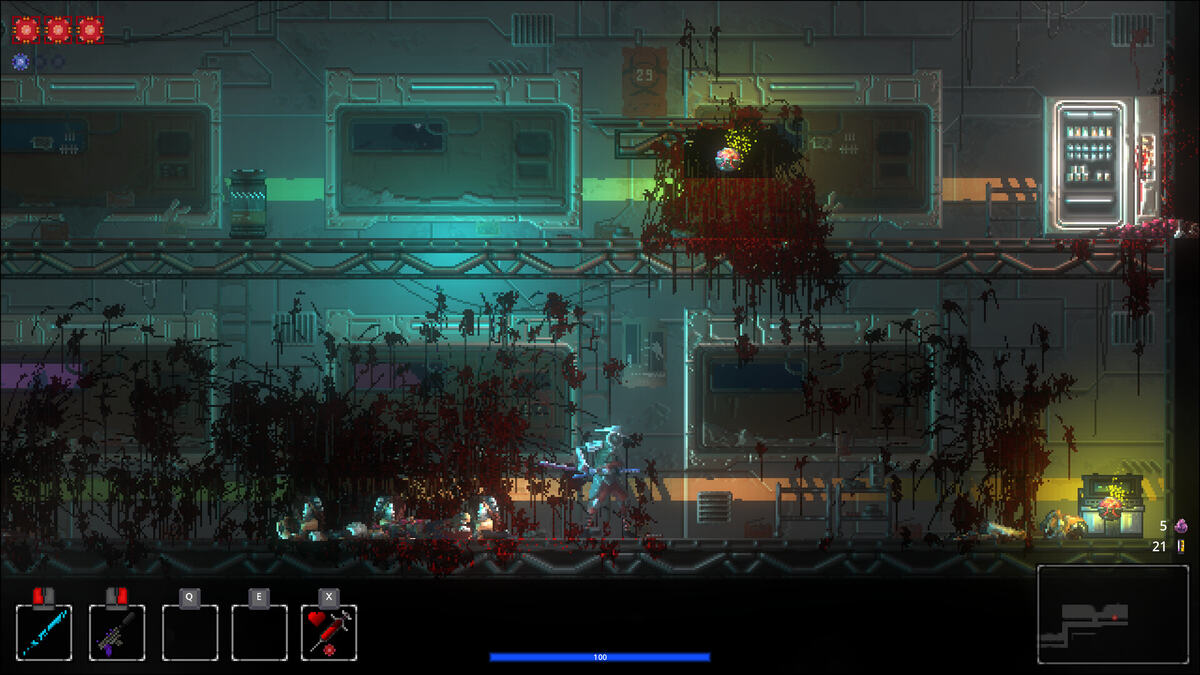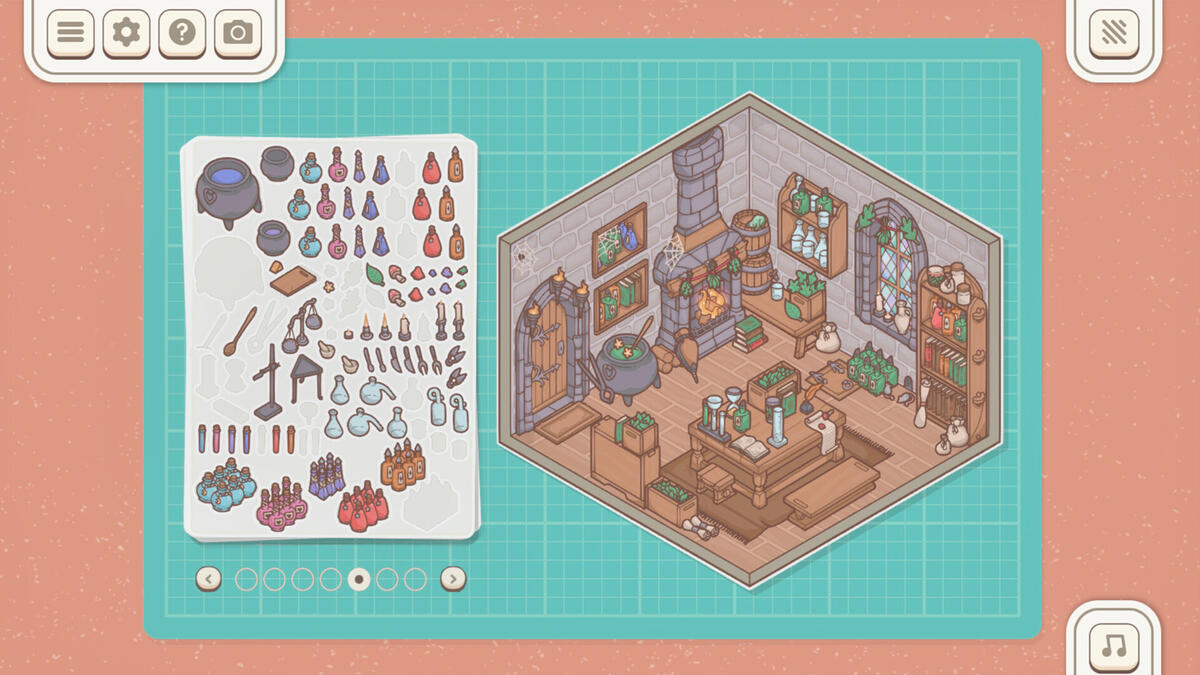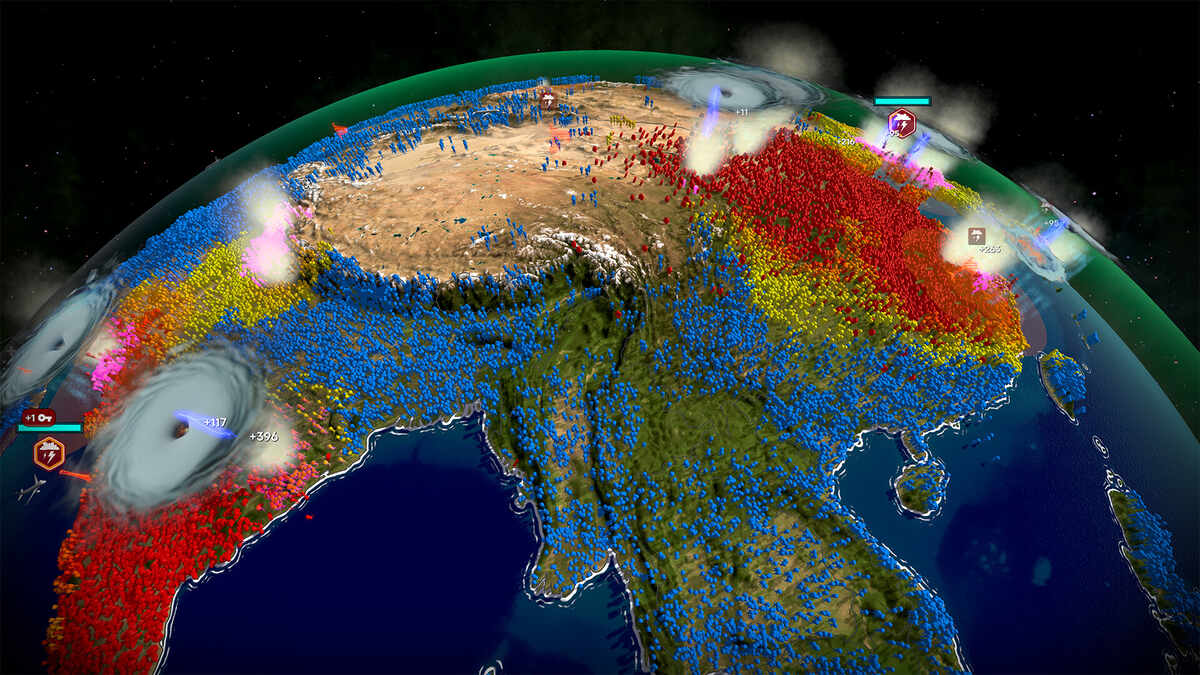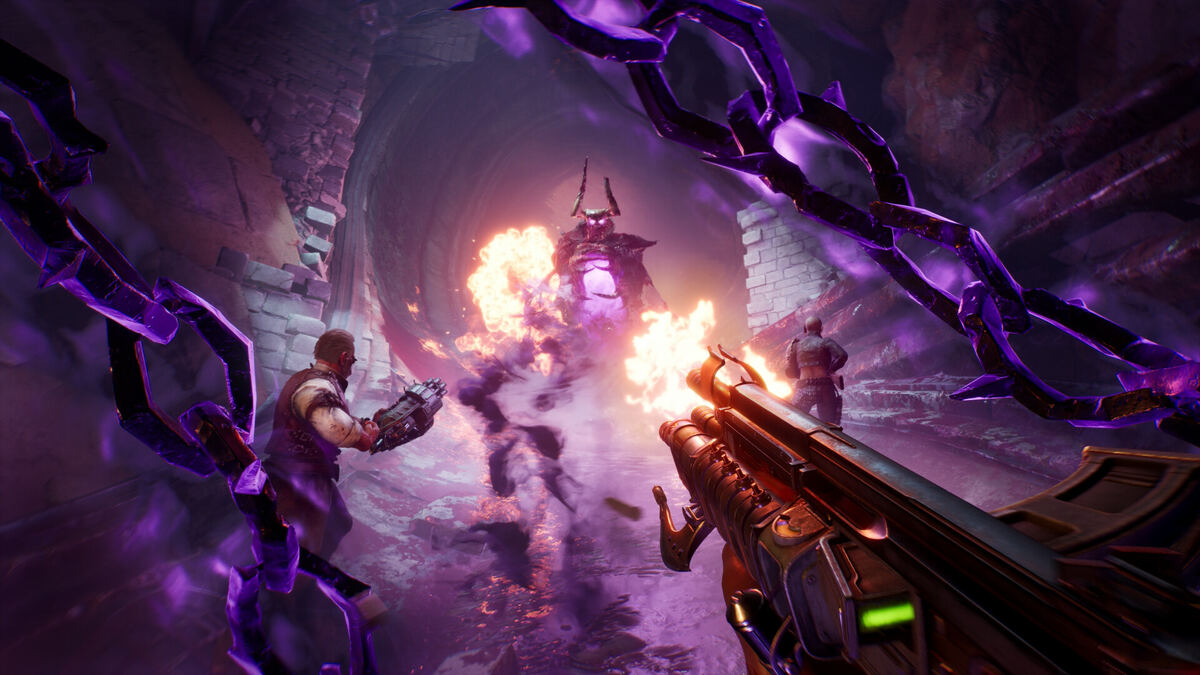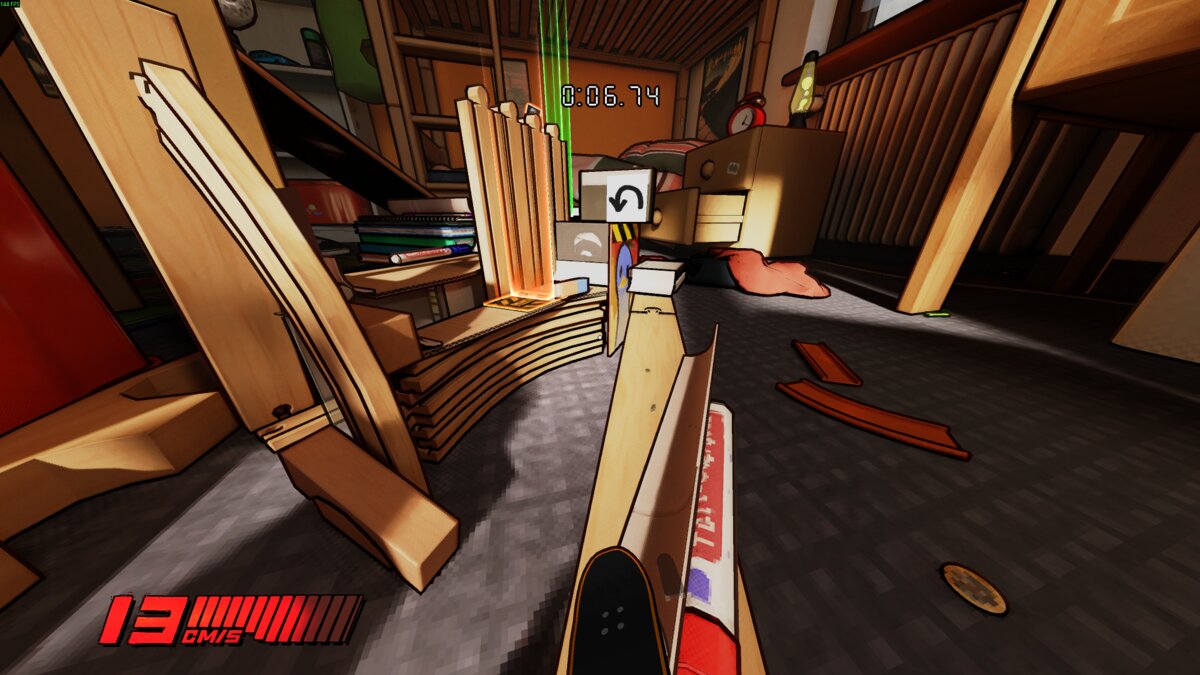You can trust VideoGamer. Our team of gaming experts spend hours testing and reviewing the latest games, to ensure you're reading the most comprehensive guide possible. Rest assured, all imagery and advice is unique and original. Check out how we test and review games here
PGR meets Mario Kart. That was the fear, anyway, during the fevered and misinformed online speculation that preceded this pre-E3 Activision event. Oh Bizarre, what have you done?
Now, as we stare at a giant screen and Bizarre’s Ben Ward takes to the podium, we’re about to get an answer. We’re about to see, for ourselves, what Blur is all about. As it transpires, PGR meets Mario Kart might not be appropriate at all.
Yes there are power-ups: Power-ups that float magically above the track and shine with bright neon light; power-ups that can be stored and cycled through; and Power-ups that grant your cars fantastical powers like Shunt, Barge, Shield, Mine and Nitro. Oh yes, there are power-ups indeed. But these power-ups are not of the blue shell variety. These power-ups won’t break the dynamic of a race. These power-ups require more than just a press of the A button to use. These power-ups require timing, skill and strategy. PGR meets WipEout.
Bizarre is at pains to stress this point as it demonstrates the game. Don’t shunt the back bumper, but the side from an angle, forcing a spin. Don’t barge on a wide stretch of road, barge when buildings and parked cars are nearby, forcing a crash. Switch to Nitro, boost up to a group of cars and barge the lot of them. Wait for the car on your tail to do the same to you, then shield just in time to protect yourself. Blur is accessible, yes. Casual? Perhaps not.
It’s an odd sight, really. Fantastical power-ups, lightning bolts, mines and beams of light, all fused with incredible detailed and realistic-looking cars and tracks that verge on the photo-realistic. You’d expect a racing game with power-ups to be cartooney, or at least heavily stylised, with vehicles that err on the side of silliness, not realism. Bizarre has resisted that temptation. It’s resisted making WipEout 2.0, or a “next-gen” Mario Kart. It’s made Blur.
To say Blur is PGR4 with power-ups is more accurate a description than it seems. The game looks, for all intents and purposes, like PGR4 with power-ups plonked on top. The car models are wonderfully detailed, as they are in PGR4. The cars are all officially licensed, as they are in PGR4. The environments are real world locations, as they are in PGR4. Even the car handling and the physics engine are the same. Under the hood, Blur is PGR4. Above it, though, it’s something very different.
Very different indeed. With up to 20 cars in a race, and of course the power-ups, action is intense, paint is constantly traded and cars are always in sight. Gone are the huge gaps that form between first and second place. Missed apexes won’t end the race. Racing lines aren’t the Bible. Gone are the track barriers, in their place post and telephone boxes, hastily arranged cones and an audience made up of glowstick-wielding flashmobbers who guide you round impromptu tracks tuned towards street racing culture. You can drive right up to the sides of buildings, smash through barriers and do all the things the PGR health and safety officer would no doubt disapprove of.
We see two races demonstrated live. As the sun goes down a Nissan 350Z jostles with a F1 engine-powered Ford Transit van in the trendy but downtrodden streets of Hackney, East London, the antithesis of the pristine Westminster tracks PGR was famous for. As the sun comes up the drifting Dodge Challenger makes mince meat of the powerful off-road Bowler Nemesis in Amboy, a dusty San Franciscan ghost town. Rival drivers trash talk over in-car radios as you grind and smash and overtake and powerslide. It’s always dusk or dawn, so Bizarre can make the most of its art design. Blur talks to the player in light, projected light, to be exact. Beams of light are shined from buildings and track-side onlookers to form chequered flags, start/finish lines, to show split times and turn markers. Light is shined on buildings, too, inspired by the French projection experts and their captivating creations. Blur is well named – it’s a cacophony of action, burnt rubber and light. And it’s something we haven’t seen before.
Despite all of that, Bizarre insists that it hasn’t dumbed down. The hardcore racer is still in Blur. The Nissan 350Z, for example, is a car that anyone will be able to drive, because it’s got great grip. But PGR veterans will be more interested in cars like the Dodge Challenger, with its powersliding potential. Bizarre says it has balanced the cars so that beginner vehicles will be able to keep up with advanced ones. While this might give vets the fear, there’s more to winning than speed, or even finishing first. For example, because the power-ups are all fired off at right angles respective to the cars, powersliding will enable skilled players to aim them much more accurately.
Perhaps, though, power-ups aren’t what make Blur interesting. Perhaps it’s something else, something a little more left field. Perhaps it’s the social network and, shock horror, the storyline. That’s right, Blur has a story, a sort of plot, with characters and everything. Rather defensively, Bizarre says Blur’s nothing like Need for Speed, no Z-list celebs, mini skirts or cheesy cutscenes. Nor is it War and Peace.
The story begins in LA, where a small group of friends start racing. More people hear about it, get interested, and it snowballs. By the time you reach New York, Barcelona and Tokyo, hundreds of people flash mob the hastily-arranged races. But you can never spend too long in one area – the attention of news helicopters force you to move on. As you progress, new groups will unlock, new power-ups will be introduced, and you’ll be able to buy more power-up slots for your cars with cash donated by your fans.
So, you’ll race actual characters, not just cars. Khan, for example, is an unsavoury fellow who you race in Hackney. He’s an aggressive sort, and loves using the more devastating power-ups. He’s even got bodyguard racers who protect him on the track. But there are more friendly characters to meet, who use the more passive power-ups like Shield and Nitro. In LA you meet an experienced ex-NASCAR racer who becomes disenfranchised with the local scene and heads off for a spot of destruction racing. You join him. All Bizarre’s doing here is providing a premise for the racing, nothing more, nothing less.
The story, for want of a better word, is told through the social network, a mechanic that forms the backbone of the entire Blur experience. In Facebook-style groups, AI characters will talk to each other in speech bubble messages, commenting on your actions in the previous race. If you’ve taken out an established veteran driver, for example, the group will be amazed at your achievement. Your victim, however, might not be so impressed.
A gimmick? Perhaps. By Bizarre’s own admission, nobody is going to play Blur for its social network. But you might end up loving it for it, especially in multiplayer (20-player online, four-player splitscreen). Here the AI racers are replaced by real players, their icons displayed in iPhone-esque small squares. You’ll be able to create your own group tailored to your every whim. Everything from the number of races to the vehicle set can be tweaked. Even the rules that govern victory can be altered. Points might be rewarded for getting a certain distance ahead of second place, or for using power-ups, or for driving like a maniac. Or anything you want. This is Bizarre giving the community the tools to create their own game. If they want a hardcore racer, more akin to PGR4, create a group with power-ups turned off. If they want Cat & Mouse, create a group with Cat & Mouse rules. In many ways, Blur is as much the community’s game as it is Bizarre’s.
It is only after Bizarre reveals this fascinating facet of the game that we truly breathe a sigh of relief. And when we learn that Blur’s game data will be exposed to the internet via a Blur application programming interface (API), which will enable gamers to build iPhone or Facebook apps, we become genuinely excited. The game will even report to Twitter, if you fancy proclaiming to the world your in-game achievements.
Blur is the result of a hugely talented development team bored by a decade-long commitment to the PGR series and desperate for a mainstream racing game hit. Yes it’s got power-ups, and there will be some die hard PGR fans who will turn their noses up at it as a result, but Blur really is hugely ambitious, and the community potential is tremendous. This is not the crazy shift in focus it might feel like at first. This is natural evolution. This is a modern racer for modern times, and there’s no going back.
Blur is due out for Xbox 360, PS3 and PC in autumn 2009.

/https://oimg.videogamer.com/images/917a/blur_3.jpg)
/https://oimg.videogamer.com/images/c3bc/blur_6.jpg)
/https://oimg.videogamer.com/images/9ba7/blur_5.jpg)
